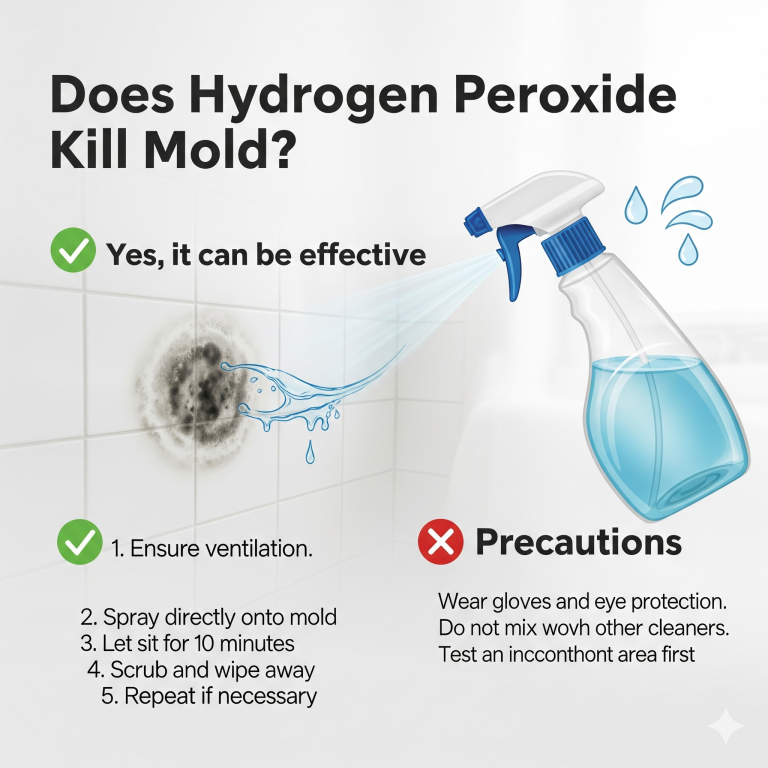
10 Common house of Hazards to Watch For
10 Best house of Hazards to Watch For
Table of Contents
Understanding in the House of Hazards:
The “House of Hazards” is an engaging and often chaotic game that tests the players’ ability to navigate through various household obstacles, all while trying to maintain their balance and avoid hazardous situations. 10 Common house of Hazards to Watch For aspect of the game that stands out is its “2 percent density” rule. While it might sound like a complex or abstract concept, understanding this rule is crucial for mastering the game and ensuring a competitive edge.
T10 Common house of Hazards to Watch For in the context of the House of Hazards refers to the difficulty level or the probability of encountering certain hazards or challenges within a particular space or time frame. Essentially, it’s a measurement that adds an element of unpredictability to the game. While the game itself is designed to be full of surprises, this rule ensures that players are constantly on their toes, with hazards occurring at a rate that keeps the action intense and the stakes high.
10 Common house of Hazards to Watch For could mean that for every 100 moves or actions taken within the game, there’s a 2 percent chance that a major hazard will occur. This could be anything from tripping over an object to encountering a sudden spill that disrupts the player’s progress.
How Does Affect Gameplay?
The impact of a 2 percent density in the House of Hazards is subtle but effective in shaping the overall gaming experience. Here’s how it plays out:
- Randomized Hazards: This small but impactful percentage ensures that players never know exactly when a hazard will strike. The chance keeps the gameplay stirring and changeable, as companies must acclimate to new tests on the fly.
- Risk and Reward: A 2 percent chance might seem low, but it adds an element of risk to each decision the players make. Players have to constantly weigh the potential for encountering hazards with the rewards of advancing through the game.
- Strategic Play: While the 2 percent density adds unpredictability, it also encourages players to develop strategies. For example, players might try to anticipate the worst-case scenario (i.e., the hazard occurrence) and find ways to minimize their exposure to it, thus improving their chances of success.
- Tension and Excitement: The low density keeps players engaged without overwhelming them with hazards every few seconds. The occasional surprise hazard adds an element of excitement, ensuring that no two rounds are ever the same.
Impact of the on Replayability
One of the greatest strengths of the House of Hazards, especially with the 2 percent density mechanic, is the game’s replayability. Every session is different, even if you play the same game multiple times. 10 Common house of Hazards to Watch For ensures that the game isn’t repetitive, while still introducing enough chaos to keep it fresh. The unpredictability of when a hazard might strike keeps players engaged, and the more you play, the better you’ll understand the patterns, strategies, and tactics that work best.

The Thrill of Uncertainty
10 Common house of Hazards to Watch For rule also feeds into one of the fundamental aspects of the game—the thrill of uncertainty. By introducing a risk, no matter how small, the game constantly challenges players to assess their decisions under pressure. That tension between making the right move and the possibility of a hazard emerging adds a layer of excitement that keeps players coming back for more.
In the House of Hazards, it’s not just about winning or completing objectives; it’s about mastering the balance between safety and risk, strategy and spontaneity. With each round, you learn something new about how to handle the ever-present potential for disaster. The 2 percent density rule may seem small in isolation, but it’s a key factor in making the House of Hazards such a captivating game.
By understanding how this density works and applying strategic thinking, you can enhance your gameplay experience and emerge victorious—no matter what obstacles come your way.
The Role of Risk Management in House of Hazards
The unpredictable nature of the House of Hazards game, driven by the 2 percent density of hazards, makes risk management a crucial element of gameplay. While it’s tempting to rush through the game and try to complete objectives as quickly as possible, a more measured, strategic approach often leads to better outcomes. The 2 percent chance of a hazard striking can be thought of as a metaphor for real-life risk management—sometimes it’s not about eliminating risk, but rather about navigating it with awareness and caution.
Here are a few more tips for mastering risk management in the House of Hazards:
- Understand Hazard Probability: While the 2 percent density gives you a low but consistent chance of encountering a hazard, it’s important to remember that risk in the game is cumulative. As you progress through the levels, you may encounter more hazards or face increasingly complex scenarios. This means you need to constantly reassess the level of risk and adjust your strategies accordingly. For example, when nearing the end of a round, the reward may feel closer, but the risk of encountering a hazard increases. It’s at these moments when your strategic thinking truly counts.
- Assess Hazard Severity: Not all hazards are created equal. Some might just slow you down temporarily, while others could set you back significantly or even result in failure. The 2 percent density rule introduces hazards at different levels of severity, so it’s important to gauge the potential impact of each hazard. This allows you to make more informed decisions about how to handle them. If you understand which hazards are more detrimental, you can prioritize your actions to minimize their effects.
- Use Hazards to Your Advantage: Some players may see hazards as obstacles to avoid at all costs. However, with a bit of creativity, certain hazards in the game might actually provide an opportunity to gain an advantage. For example, a hazard that disrupts other players’ progress can be used strategically to delay their movements, giving you more time to advance. Understanding the mechanics of each hazard allows you to exploit them, turning what could be a setback into a tactical advantage.
How the Promotes Focus and Adaptability
While the game’s hazards keep players on their toes, the relatively low density of these challenges fosters a heightened sense of focus. Players can’t afford to become complacent, thinking that there’s no risk on the horizon. The 2 percent chance ensures that hazards aren’t overwhelming, but they’re always present as a reminder that things can change at any moment.
This emphasis on focus is vital. Players must be constantly aware of their surroundings, their position in the game, and their potential next moves. A lack of attention, even for a moment, can result in being caught off guard by a sudden hazard, even if it’s only a 2 percent chance of happening. On the flip side, the game encourages adaptability. When a hazard does occur, how you respond to it often determines your success. Whether it’s recovering from a minor setback or finding a way around a more dangerous obstacle, adaptability is essential to overcoming the challenges posed by the game.
The Importance of Psychological Resilience
An often overlooked but critical aspect of the House of Hazards, especially with its 2 percent hazard density, is the psychological resilience required to keep playing. The knowledge that a hazard could strike at any time—no matter how low the probability—can cause a lot of tension. However, this tension is what makes the game so engaging and exciting.
Players must be mentally prepared for setbacks and learn how to recover quickly. The occasional hazard might send you tumbling backwards or force you to rethink your entire strategy, but the ability to bounce back and keep pushing forward is key. Just as with real-world challenges, resilience in the face of adversity helps players maintain their competitive spirit and enhances the overall gaming experience.
Encouraging Social Interaction and Competitive Spirit
The 2 percent density of hazards isn’t just a gameplay mechanic—it also serves to fuel social interactions and competitive dynamics among players. When hazards occur at unexpected moments, it often leads to a burst of energy, with players laughing, cheering, and sometimes groaning in frustration. This randomness raises a sparkling heaven that cheers message, partnership, and outgoing race.
In multiplayer settings, especially, the low hazard density keeps everyone on their toes. Players can’t afford to zone out, lest they miss the moment when a hazard strikes and disrupts their progress. The random occurrence of hazards, coupled with the thrill of trying to outsmart opponents, ensures that the game remains competitive yet lighthearted. The constant tension—without overwhelming players with frequent hazards—strikes a perfect balance between a cooperative challenge and an opportunity for competitive play.

The in Various Game Modes
While the standard 2 percent density rule is fun in its own right, the House of Hazards often includes different modes or difficulty levels that adjust this density. Reliant on the scenery, you might find:
- Increased Hazard Frequency: In some modes, you might encounter more frequent hazards. Here, the 2 percent density is increased to ramp up the difficulty, forcing players to rely more heavily on quick reflexes and adaptability. This is ideal for players looking for a higher level of challenge.
- Hazard-Free Rounds: Conversely, certain rounds may have a reduced density of hazards or even none at all, allowing players to focus more on the primary tasks or objectives of the game without worrying about sudden disruptions. This creates a more relaxing environment for casual play.
- Multiplayer Competitive Mode: When playing with friends or as part of a team, the 2 percent density rule introduces an element of surprise that encourages players to keep an eye on both the game environment and each other. Players must adjust their strategies based on the actions of opponents and the likelihood of encountering hazards. Here, the 2 percent density is a great equalizer, as everyone is subject to the same level of uncertainty.
- Survival Mode: In certain variations, players may be tasked with surviving a longer session with only minimal hazard interruptions. The 2 percent density can be adjusted to ensure that the hazard occurrence remains consistent, adding layers of excitement as players work to avoid potential mishaps while completing specific objectives.
Customizing the Experience
Some versions of the game may allow players to tweak the 2 percent density rule to suit their preferences. Players who find the regular hazards to be too mild can raise the chance of encountering hazards, while those who want a more relaxed pace can lower it. This level of customization ensures that the game remains adaptable to different skill levels and preferences, making it accessible to both newcomers and experienced players alike.
By tweaking the density to their liking, players can curate the level of challenge they want, leading to more personalized gaming sessions. Whether you’re seeking a casual and fun time with friends or a more intense experience that tests your reflexes and strategy, adjusting the density can provide an entirely new way to enjoy the game.
Conclusion
The “2 percent density” rule in the House of Hazards is an ingenious mechanic that balances the need for unpredictability with the desire for fair, engaging gameplay. It ensures that hazards occur just often enough to keep the game exciting but not so often that it feels overwhelming. By understanding and embracing this rule, players can approach the game with a sense of strategy and adaptability, making the overall experience more dynamic and enjoyable. Whether you’re a seasoned player or new to the game, the 2 percent density is one of the key features that makes the House of Hazards an unforgettable and thrilling experience.
FAQs,
What is House of Hazards?
This is the most basic and essential question. Players need to understand the premise of the game: navigating household tasks and avoiding random hazards like spills and falling furniture.
How do I play House of Hazards?
After understanding the concept, players typically want to know the mechanics—how to move around, complete tasks, and avoid obstacles. This is crucial to getting started.
What does the “2 percent density” mean?
This question dives into the game mechanics and how random hazards are triggered. It’s important to know how often hazards can strike to stay prepared and avoid surprises.



